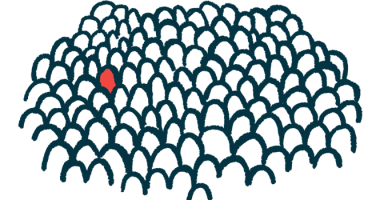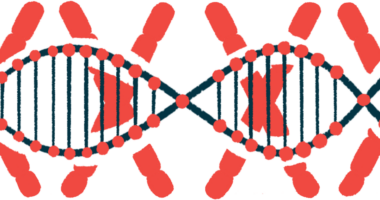Treatment for psoriasis also found to help with woman’s PCT
Cosentyx may be successful therapy in porphyria, case study shows

Cosentyx (secukinumab) — a treatment approved for a skin condition called psoriasis — successfully treated both that disorder and porphyria cutanea tarda (PCT), the most common form of porphyria, in a 65-year-old woman, a case study shows.
Subsequently stopping Cosentyx, which works by blocking the pro-inflammatory molecule IL-17, led to the reappearance of the woman’s PCT and psoriasis skin lesions. These were successfully controlled once again by restarting the psoriasis treatment.
These findings suggest that the “IL-17 pathway is involved in the clinical manifestations of PCT, opening new avenues for therapeutical interventions,” the researchers wrote.
Also, the use of secukinumab did not affect the patient’s HIV status, which remained well-controlled, without disease manifestations.
The report, “Control of porphyria cutanea tarda with anti-IL-17 secukinumab in a person with psoriasis living with HIV,” was published in the journal Oxford Medical Case Reports.
Woman, 65, diagnosed with PCT, psoriasis and HIV
Like other types of porphyria, PCT is characterized by the buildup of molecules called porphyrins in the skin. These porphyrins make the skin extremely sensitive to sunlight and more prone to blisters and skin crusts.
PCT onset and severity can be triggered by alcohol consumption, excessive iron accumulation in the body, and infections by HIV and the hepatitis C virus (HCV).
Now, a team led by researchers at McGill University Health Centre, in Canada, described the case of an older woman with a history of HIV and HCV infection in whom treatment with Cosentyx — used for her co-occurring psoriasis — also resolved her PCT lesions.
Novartis’ Cosentyx is an antibody-based therapy approved for certain inflammatory conditions, including psoriasis, which is characterized by itchy and flaky patches of skin. The therapy is designed to suppress the activity of IL-17, a pro-inflammatory molecule involved in psoriasis.
The woman was living with HIV since 1992, after receiving a contaminated blood transfusion to treat abnormally low levels of platelets, tiny blood cells involved in blood clotting. She received HIV treatment and remained with an undetectable viral load.
In June 2008, she was diagnosed with HCV, likely acquired from her past blood transfusion, the researchers noted. She did not receive treatment for the infection at the time.
About one year later, she developed severe and extensive skin blisters and skin peeling upon minimal sun exposure “that forced her to wear gloves and a hat in her daily activities,” the researchers wrote.
She was diagnosed with PCT after she was seen by a dermatologist and high levels of porphyrin-related molecules were detected in her urine. Lab work also showed signs of iron overload and she underwent several phlebotomies, a standard treatment that draws out blood to remove excess iron from the body.
In 2012, she started HCV treatment and her PCT lesions healed, allowing her to continue phlebotomy sessions for a year.
About a year after that, she was diagnosed with severe psoriasis. Over the next five years, her skin condition became resistant to treatment applied directly in the skin and to oral methotrexate, an immunosuppressive medication.
In January 2018, she sought treatment at the researchers’ clinic for worsening skin patches of psoriasis on her arms, abdomen, thighs, and buttocks.
Researchers urge further testing of psoriasis treatment for PCT
All physicians involved in her care discussed the best course of treatment. Based on her HIV status and high counts of certain immune cells, the team decided to start Cosentyx for her psoriasis — with close monitoring of her immune system.
Cosentyx, administered as subcutaneous or under-the-skin injections, at a dose of 300 mg every week for four weeks, was started in August 2018. The patient had received appropriate vaccinations and had no signs of HCV infection. The dose was tapered to 300 mg monthly for six months, and then to 150 mg monthly as requested by the patient.
Within two months of Cosentyx treatment, her psoriasis lesions were markedly eased, and “unexpectedly, her sunlight-induced forearm blisters also reduced in number and intensity,” the researchers wrote.
Because sun exposure no longer triggered her PCT lesions, phlebotomies were stopped. No skin changes were noticed despite lab work showing increased signs of iron overload.
Based on the complete resolution of both skin conditions, the woman went on holiday to Florida in February 2020, during which she tolerated sun exposure well even without sunscreen. This prompted her to halt Cosentyx treatment, but skin lesions due to psoriasis and sun-induced blisters reappeared after three months without treatment.
She resumed Cosentyx and experienced marked lessening of both psoriasis and PCT skin lesions after two months.
[This case report] supports the role of anti-IL-17 in controlling the clinical manifestations of certain patients with PCT, compelling further studies.
Through the time this report was published, the woman was keeping Cosentyx as a maintenance therapy and had not develop any more skin lesions. She also had not had any phlebotomies and showed mild levels of iron overload.
“In summary, our case report suggests that [Cosentyx] was effective and well-tolerated in treating both psoriasis and PCT skin lesions without inducing [HIV-related manifestations],” the researchers wrote.
Overall, this case report “supports the role of anti-IL-17 in controlling the clinical manifestations of certain patients with PCT, compelling further studies,” they concluded.








